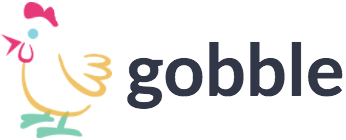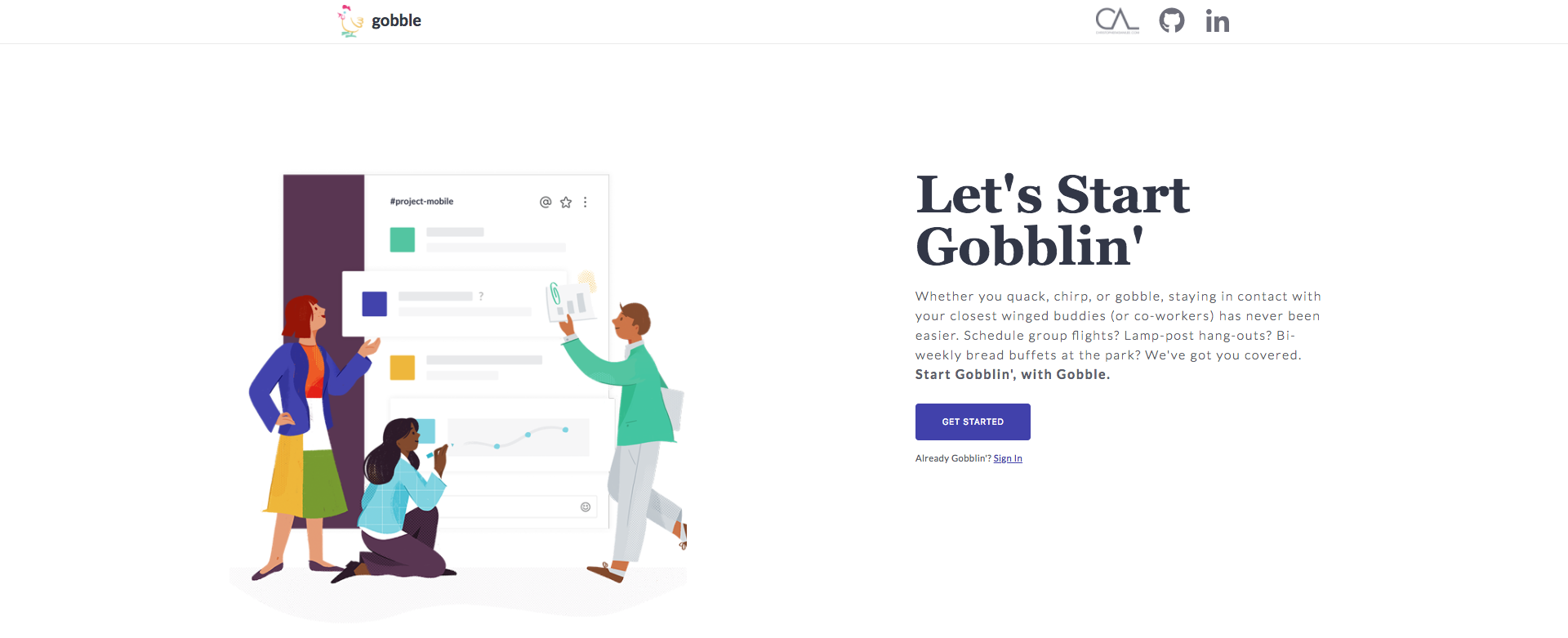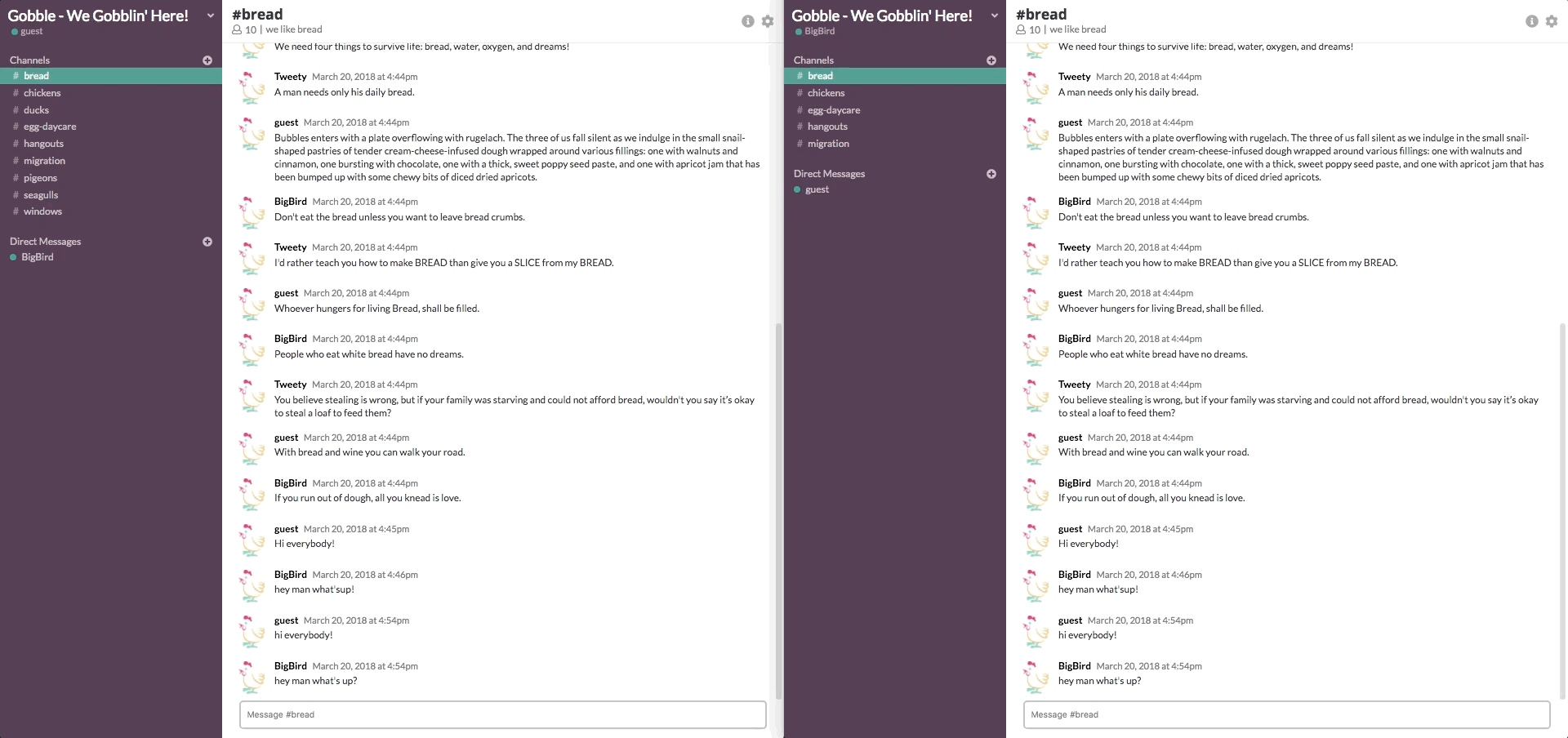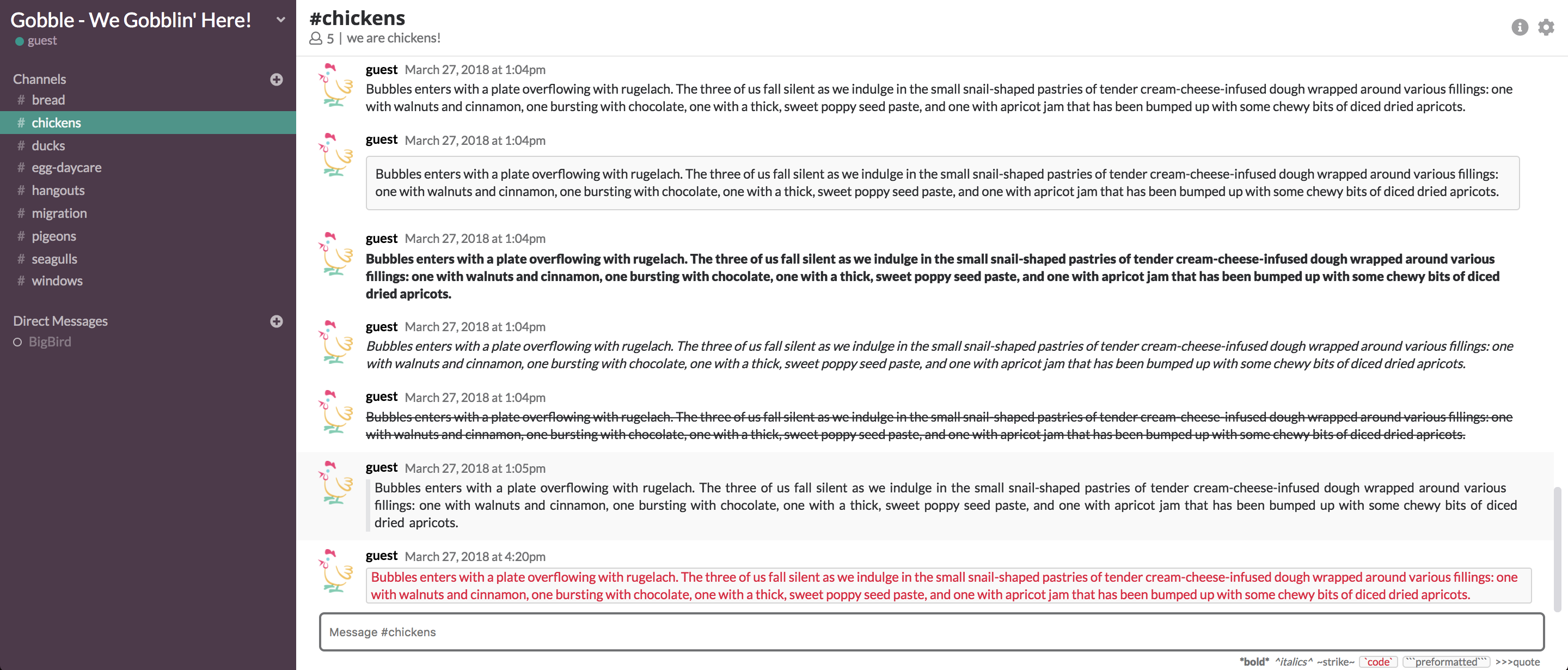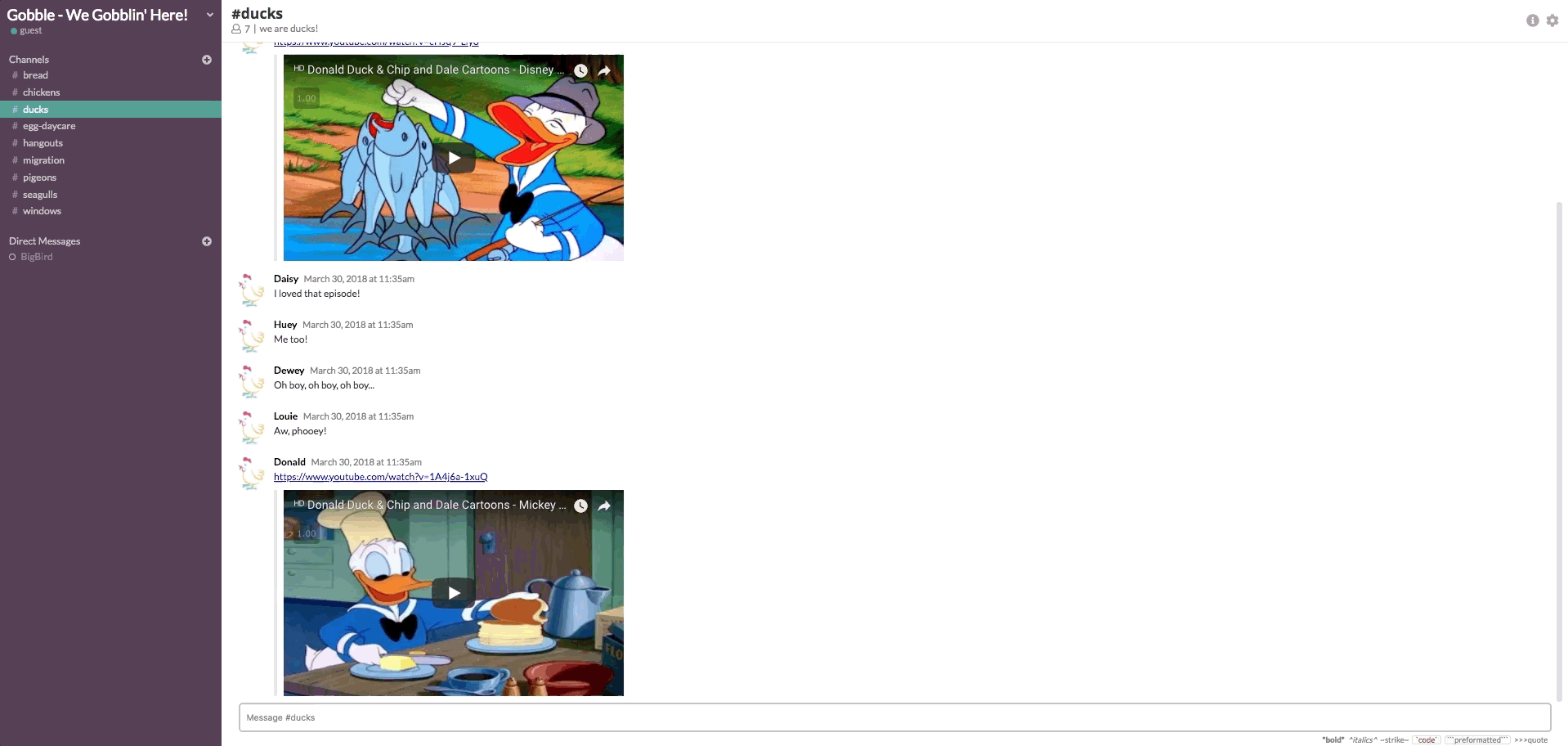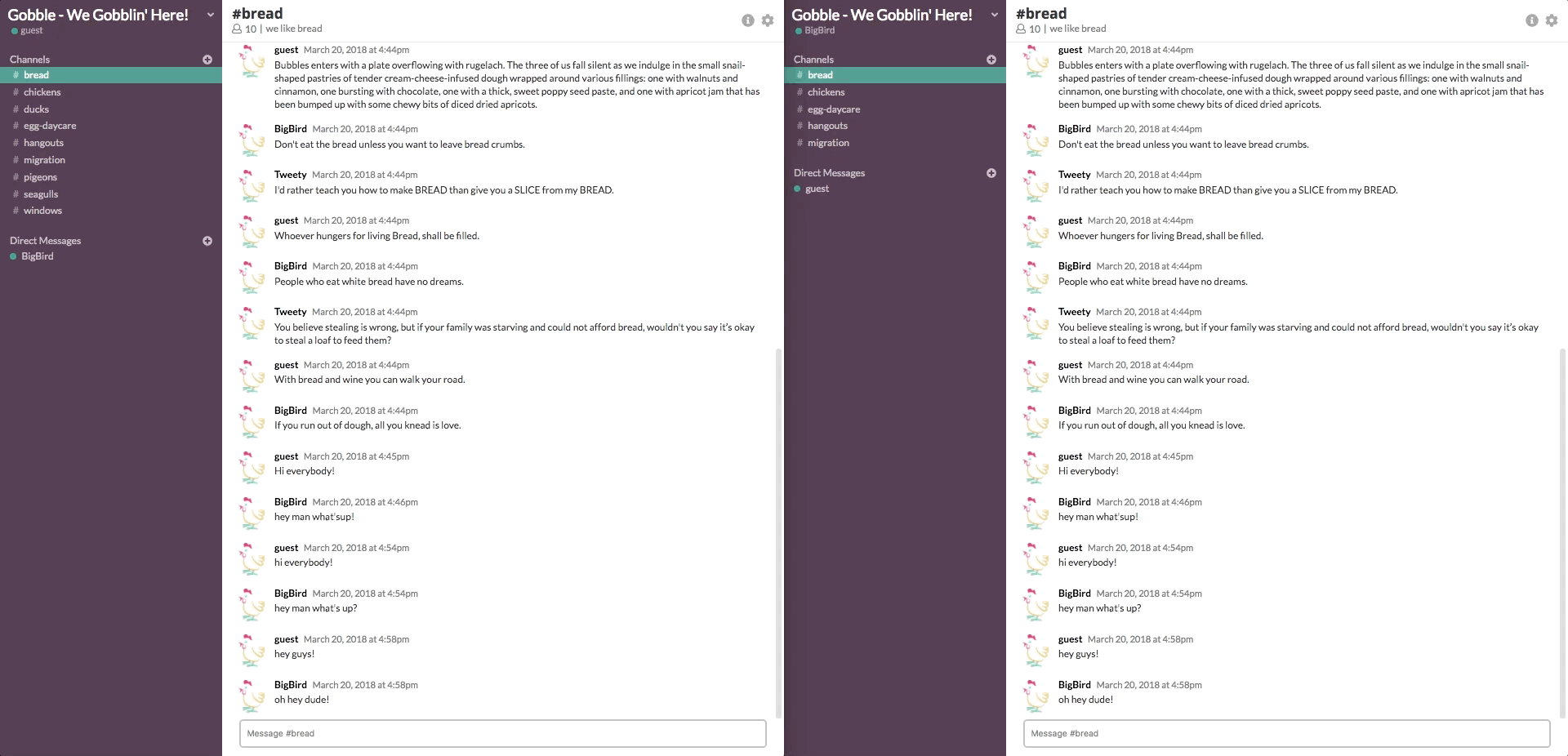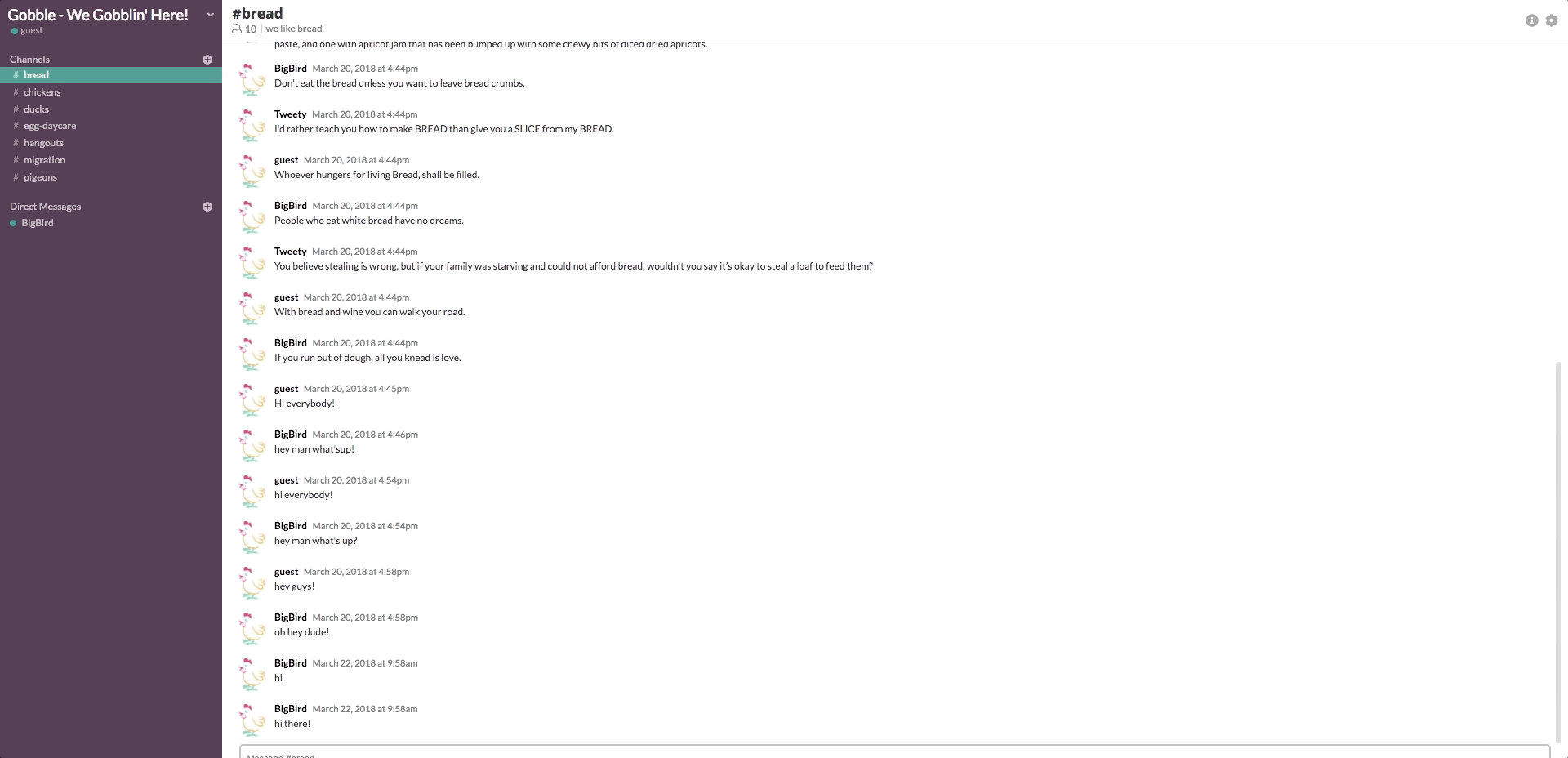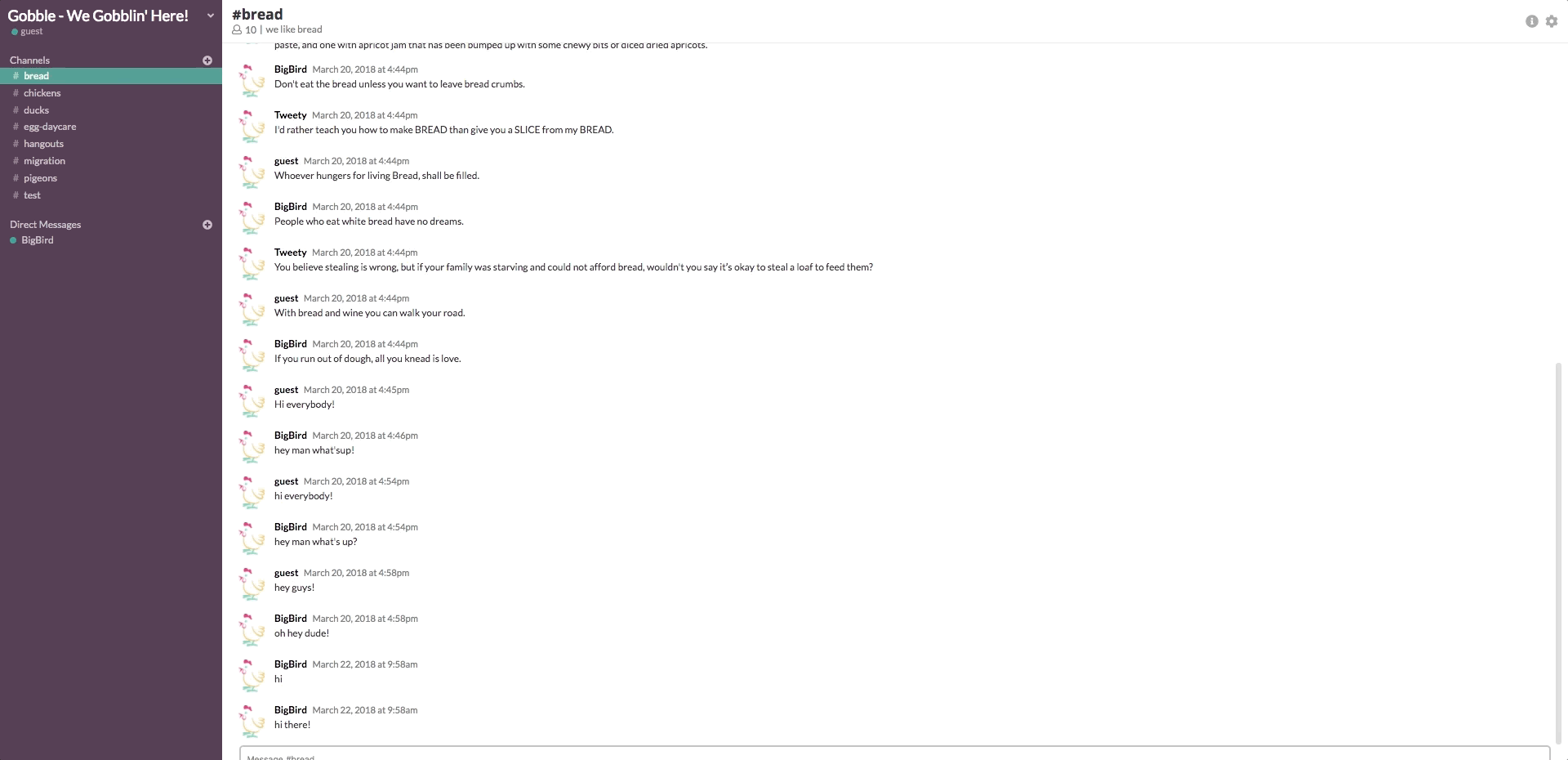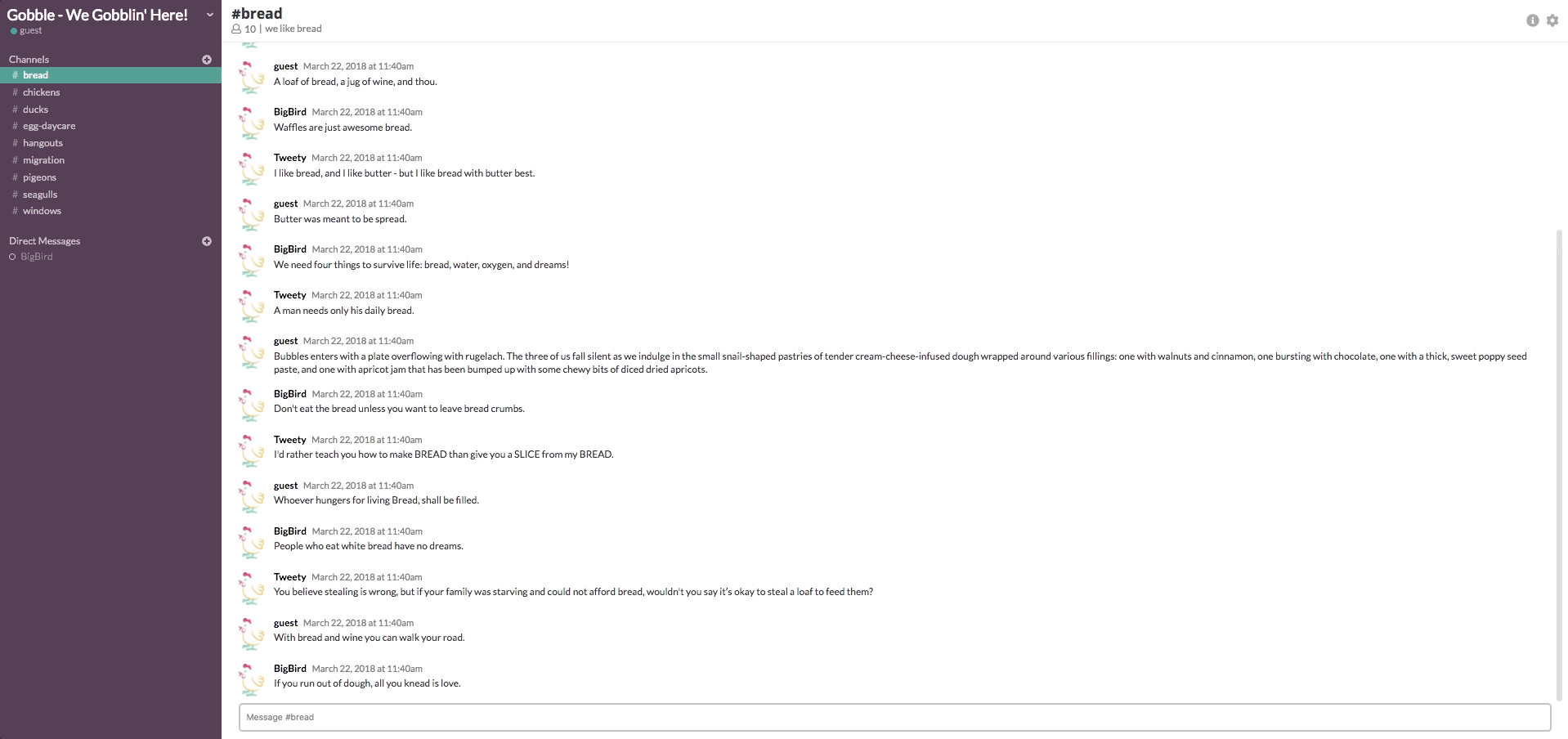Gobble is a full-stack single-page messaging application inspired by Slack. It uses Ruby on Rails on the backend to produce a RESTful API, React/Redux on the frontend, and Pusher to implement WebSockets seamlessly.
- User Authentication with automated demo-login using Devise
- Live-Messaging
- Message Formatting
- Notifications
- Current Channel Notifications
- Channels
- Direct Messages
- Group Messages
- User Presence (Online, Offline)
Users can use the demo-login provided to sign into Gobble. Authentication is implemented using the Devise gem.
class Users::SessionsController < Devise::SessionsController
def create
@user = User.find_for_database_authentication(username: params[:user][:username])
errors = {}
if @user && @user.valid_password?(params[:user][:password])
sign_in @user
render 'api/users/show'
else
if User.find_by(username: params[:user][:username]) == nil
errors[:username] = ['Invalid Username.']
end
errors[:password] = ['Invalid Password.']
render json: errors, status: 401
end
end
def destroy
if current_user
render json: current_user
sign_out current_user
else
render json: ["No one is logged in!"], status: 404
end
end
endUsing Pusher to interact with WebSockets, live-messaging between users in channels, direct messages, and group messages are seamless and intuitive.
Pusher triggers an action for a specified channel whenever a new message is created:
def create
@message = Message.new(message_params)
@message.author_id = current_user.id
if @message.save
Pusher.trigger('channel_messages', 'message_created', {channelName: @message.channel.name})
render 'api/messages/show'
else
render json: @message.errors.messages, status: 422
end
endThe messages components then subscribe to these actions on mounting and respond accordingly:
let that = this;
this.channelMessages = this.pusher.subscribe("channel_messages");
this.channelMessages.bind("message_created", function(data) {
that.getChannelMessages(that.props.currentChannel.name);
});Gobble currently supports the following message formats:
- Bold (wrapping text in *'s)
- Italics (wrapping text in ^'s)
- Strikethroughs (wrapping text in ~'s)
- Code Snippet (wrapping text in " ` "s)
- Preformatted Snippet (wrapping text in " ``` "'s)
- Quotes (starting text with ">>>")
When a user messages in a channel consecutively, those messages are grouped so that the user's avatar isn't always being displayed at each message. The time threshold to group these messages is between 1 day.
Message will render an embedded video player for users to view within the application (currently only supports YouTube)
When the user is viewing a current channel, direct message, or group message, and an incoming message is delivered, the messages component renders a "new messages" banner or automatically scrolls down to the most recent message depending on the current user's scroll height when viewing messages. If the "new messages" banner is rendered, the user can click on it to view the new message(s).
Users can browse existing channels via live-search. In the same component, they can also see which channels they currently belong to and those they can join. Viewing any channel from the channel search component is as simple as a click of a button.
Users can create their own channel from the channel creation form. Error handling is done on the front-end for immediate feedback on whether or not the current channel parameters are valid. If invalid, the applicable input fields will render a red border around themselves and the 'Create Channel' button will be disabled and 'greyed out' for the user to visibly be notified that their input is invalid.
Direct messages and group messages can be created under the same 'create direct message' menu. Before opening a direct/group channel, a validation checks if that particular direct/group channel relationship currently exists in the database. If it does, the user is re-routed to the URL path of that direct/group channel. If not, the direct/group channel is created in the database and then the user is routed to the URL path of the newly created channel.
To prevent other users from viewing direct messages that they aren't associated with via an ID enumeration attack, a validation is done to check if the current user actually belongs to the direct message they are trying to access. If they aren't, the user is redirected to their last visited channel.
Users can view if other users are online or offline either through the direct messages portion of the sidebar, the header in the direct message component, or the channel/group detail that can be accessed within those respective channel components.
- [DONE] User Authentication
- [DONE] Landing Page
- [DONE] Pusher Implementation
- [DONE] Channels
- [DONE] Channel Search
- [DONE] Channel Group Messages
- [DONE] Direct Messages
- [DONE] Online/Offline User Activity
- [DONE] Message Formatting
- Notifications
- Paperclip Implementation
- User profile photo
- User photo messaging
